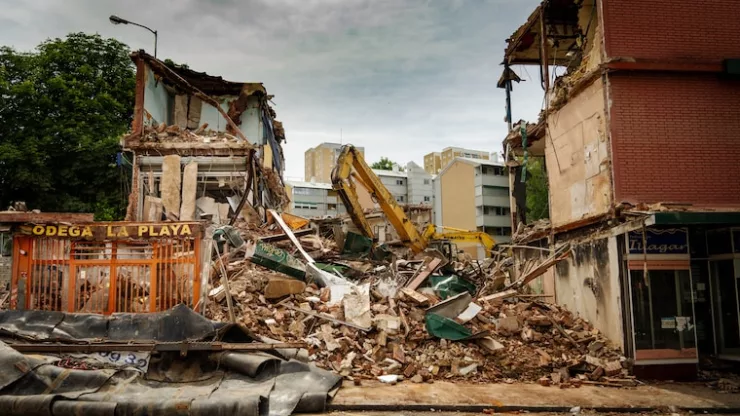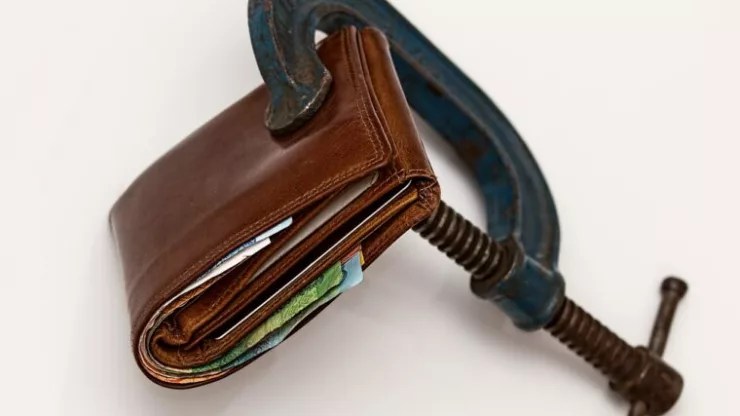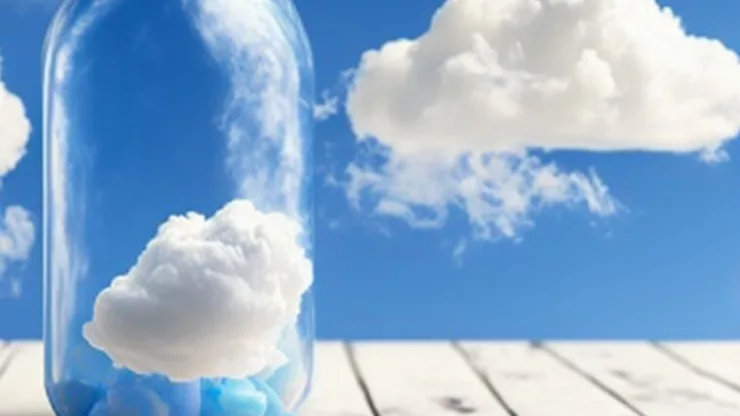The Importance of Being Prepared for Emergencies
As a society, we have become far too complacent in our comfortable daily lives.
We often take for granted the fact that we have easy access to food, clean water, shelter, and medical care.
However, when disaster strikes – whether it be a natural disaster such as a hurricane or earthquake, or a man-made emergency such as a terrorist attack – all of these luxuries can disappear in an instant.
That’s why it is crucial that we all take steps to prepare for emergencies.
It’s not just about surviving the initial impact of the crisis – it’s also about being able to sustain ourselves and our loved ones for days or even weeks afterward.
An Overview of What This Article Will Cover
In this article, I will provide you with practical tips and advice on how to be prepared for any emergency.
We’ll cover everything from building your emergency kit and storing food and water supplies to finding safe shelter and staying connected with loved ones during a crisis.
You’ll learn how to pack your kit efficiently so that you can access what you need quickly when time is of the essence.
You’ll also discover some innovative ideas for non-perishable foods that can last for months or even years.
We’ll explore different options for sheltering during emergencies, including preparing your home ahead of time and finding alternative locations if necessary.
And since communication is key during emergencies, we’ll discuss ways to stay connected with loved ones when traditional methods fail.
Of course, injuries and illnesses can occur at any time – but especially during an emergency situation.
That’s why we’ll cover basic first aid techniques as well as essential supplies you should include in your emergency kit.
I’ll provide some special considerations regarding how to prepare if you have children or pets, or if you have unique medical needs.
Overall, this article aims to equip you with the knowledge and tools necessary to be prepared for any emergency.
So let’s get started!
The Basics: Building Your Emergency Kit
List of Essential Items to Include in Your Kit
We all know that building an emergency kit is important, but do you really know what essentials you need? It’s time to get serious about being prepared.
Here is a list of items you absolutely must have in your kit:
- Water: At least one gallon per person, per day for at least three days.
- Non-perishable food: Canned goods, dried fruit, and granola bars are all great options.
- First aid kit: Bandages, antiseptic wipes, pain relievers, and anything else that pertains to your health needs.
- Flashlights & batteries: For when the power goes out!
- Cash & important documents: In case you need to leave your home quickly or if banks are closed. Don’t forget about your personal needs as well – medications, sanitary products (for women!), and any other special needs your family may require.
Creative Ways to Pack and Organize Your Kit for Easy Access
Now that you have the essentials covered let’s talk about packing them. It’s not just about throwing everything in a backpack and calling it a day.
You need to organize and pack strategically. One option is using clear storage containers with lids.
This way, you can see what’s inside without having to rummage through everything.
Label each container with its contents so when it comes time to grab something quickly – like a first aid kit – there will be no confusion.
Another option is using backpacks with multiple compartments or even fanny packs. This will allow you quick access without having to take everything out of the bag.
Make sure your emergency kit is stored in an easily accessible location – preferably near an exit or somewhere close where you can quickly grab it and go.
Don’t put it in a closet or your attic where you won’t be able to access it quickly during an emergency.
Building an emergency kit is not just something you should do – it’s something you must do.
Make sure you have all the essentials and pack them strategically so they are easily accessible.
Remember, being prepared could save your life!
Food and Water: Staying Nourished During an Emergency
Tips for storing food and water supplies
When it comes to preparing for emergencies, one of the most essential aspects is ensuring that you have enough food and water to sustain yourself and your family.
However, simply stockpiling a bunch of canned goods can lead to a lot of waste if they’re not rotated properly.
Here are some tips for storing food and water supplies:
- First, make sure you have enough water on hand. The general rule is to have at least one gallon per person per day, so make sure you have enough to last for several days or even weeks. Store it in sturdy containers made specifically for long-term storage.
- When it comes to food, focus on shelf-stable items that don’t require refrigeration or cooking. This includes things like canned fruits and vegetables, crackers, peanut butter, nuts, dried fruit, granola bars, and jerky. Make sure you rotate your stockpile regularly – use the “first in first out” method so that nothing goes bad before you get a chance to eat it. And don’t forget about your pets – make sure you have enough dry pet food on hand as well.
Creative ideas for non-perishable foods that can be stored long-term
While canned goods are certainly a staple of emergency preparedness kits everywhere, there are plenty of other options for non-perishable foods that can be stored long-term.
One option is freeze-dried meals – these lightweight packages contain complete meals (often with meat included) that can be rehydrated with boiling water.
They’re easy to store and require minimal prep time.
Another option is meal replacement bars or shakes – these often come in individual packets or cans and provide a complete meal’s worth of nutrition in a single serving. Dehydrated fruits and vegetables are another option – they can be used in recipes or eaten as a snack, and they last for a long time if stored properly.
Consider stocking up on vitamin and mineral supplements – these can help ensure that you’re getting all the nutrients you need even if your diet is limited during an emergency.
Remember that it’s important to maintain a balanced diet even in an emergency situation, so make sure to plan accordingly and stock up on a variety of foods.
Shelter: Finding Safe Haven During an Emergency
Preparing your home for potential disasters
Your home should be a safe haven during an emergency. However, if you fail to prepare adequately, it could become a death trap.
One of the first things you should do is to assess the risks in your area. Is there a likelihood of flooding, tornadoes, hurricanes, or earthquakes?
Once you understand the risks, take steps to mitigate them.
For instance, you can install heavy-duty bolts on doors and windows to keep them from flying open during high winds.
You can also reinforce your roof and walls to make them more resistant to strong winds and debris.
Additionally, ensure that all electrical wires and gas lines are properly installed and secured.
Another way to prepare your home for emergencies is by creating designated safe zones within the house where family members can huddle together in case of danger.
For example, if there’s a tornado warning, choose an interior room with no windows as your safe zone.
Alternative options for shelter: camping or staying with friends/family
Camping might not be everyone’s cup of tea, but in emergencies where homes are destroyed or uninhabitable due to natural disasters such as hurricanes or floods, it might be a lifesaver.
The key is ensuring that you have enough supplies such as food, water purifiers or filters (if necessary), sleeping bags & tents, etc., so that you can survive outdoors until help arrives.
If camping isn’t an option for you – perhaps due to age or health issues – consider staying with friends/relatives outside of the affected area.
Keep in mind that this might not always be feasible, especially if they too have been affected by the same disaster, which means they might also need shelter elsewhere.
Don’t wait until it’s too late! Prepare now so that when disaster strikes, you’ll be ready to protect your home and loved ones.
Remember, having an emergency plan in place is not a luxury but a necessity which can mean the difference between life and death.
Communication: Staying Connected During an Emergency
Ensuring you have a reliable means of communication
When it comes to emergencies, having a reliable means of communication can be the difference between life and death.
In this day and age, we all rely on our cell phones for everything, but what happens when the power goes out or the cell towers are down?
It’s important to have backup options for communication. Invest in a good quality two-way radio that has a long-range signal and is weather-resistant.
This will allow you to communicate with others in your area and get updates on the situation at hand.
Don’t solely rely on social media as it can be unreliable during an emergency.
Another option is to have a landline phone that does not rely on electricity.
With a landline phone, you can still make calls even if there is no power or cell service.
Make sure to keep important phone numbers written down in case you need them. Consider getting a satellite phone.
Satellite phones work anywhere in the world and are not dependent on local infrastructure such as cell towers or power grids.
Creative ways to stay connected with loved ones during a crisis
During an emergency, it’s important to stay connected with your loved ones so everyone knows each other’s status and location.
Here are some creative ways to do so:
- Create a group chat or email chain – This is an easy way for everyone in your family or friend group to stay updated with what’s going on.
- Use social media – While we don’t recommend relying solely on social media for communication, it can be useful during emergencies when other forms of communication aren’t working properly.
- Use apps – There are several apps available specifically designed for emergency situations such as Zello or FireChat that use radio frequencies instead of cellular data to send messages.
- Designate meeting spots – Make sure you and your loved ones have designated meeting spots in case communication methods fail. This could be a nearby park or a specific intersection.
- Carry a whistle – A whistle may seem like an outdated item, but it can be very useful for signaling to others if you need help or are in danger.
Overall, being prepared for emergencies means having backup options for communication and finding creative ways to stay connected with loved ones.
Don’t rely on just one method of communication and make sure everyone knows the plan beforehand.
First Aid: Treating Injuries and Illnesses During an Emergency
Emergencies can happen at any time, so being prepared to provide basic medical care is essential.
Whether you are dealing with minor injuries or more serious medical emergencies, knowing what to do can save a life.
In this section of the article, we will discuss essential first aid supplies to include in your emergency kit and basic first aid techniques that everyone should know in case of injury or illness.
Essential First Aid Supplies to Include in Your Emergency Kit
When it comes to first aid, having the right supplies on hand is crucial. Here are some essentials that you should have in your emergency kit:
- Bandages – For cuts and scrapes, make sure your kit contains a variety of bandages in different sizes.
- Gauze pads – Use these for larger wounds that require more than just a bandage.
- Adhesive tape – Use this to hold the gauze pads in place.
- Antiseptic wipes – Use these to clean wounds before applying bandages or gauze.
- Scissors – To cut tape, clothing, or other materials if needed.
- Tweezers – For removing splinters or foreign objects from the skin.
- Gloves – Wear gloves when treating others so that you don’t get infected by blood-borne pathogens.
- Thermometer – Check the patient’s temperature.
- Pain relievers – Aspirin or Acetaminophen for pain relief.
Basic First Aid Techniques
In addition to having the right supplies, knowing how to use them is equally important when it comes to providing first aid during an emergency situation.
Here are some basic first aid techniques:
- Stopping bleeding – Apply pressure on the affected area with a clean cloth until bleeding stops.
- Treating burns – Run cool water over the burned area for 10-15 minutes. Cover the burned area with a sterile gauze pad and secure it in place with tape.
- Dealing with broken bones – Immobilize the affected area by using a splint or wrap.
- Treating shock – If someone is in shock, elevate their feet and keep them warm.
- CPR – Learn how to perform CPR in case of cardiac arrest, as performing it correctly can mean the difference between life and death.
Knowing these basic first aid techniques can go a long way toward ensuring that you are able to provide care during an emergency situation.
Incorporating first aid supplies into your emergency kit is essential to being prepared for any emergency situation.
It’s important to refresh your knowledge of first aid techniques regularly so that you feel confident and capable when faced with an injury or illness during an emergency.
By taking proactive steps towards being prepared now, you can help ensure that you are equipped to handle whatever may come your way in the future.
Special Considerations: Preparing for Unique Situations
Tips for preparing if you have children, pets, or special medical needs
When it comes to being prepared for emergencies, it’s important to take into account any special considerations that may apply to you or your family.
If you have children, make sure that you have enough supplies and food stocked up to last them through a potential crisis situation.
This can include diapers, baby food, formula, and other essentials. If you have pets, don’t forget about them in your emergency planning.
Make sure that they have enough food and water, as well as any medication or other supplies that they may need.
It’s also a good idea to make a plan for where your pet can go if you need to leave your home during an emergency.
For those with special medical needs, it’s important to ensure that there are enough medications on hand to last through an emergency situation.
This may require talking with your doctor ahead of time and making arrangements for extra prescriptions or supplies.
Creative solutions for unique situations
Power outages can be especially challenging in emergency situations. However, there are several creative solutions that can help you stay comfortable and safe even without electricity.
For example, invest in battery-powered lanterns or flashlights so that you always have light available.
You can also purchase portable battery banks to keep devices charged and running during power outages.
For those who live in areas prone to flooding or other natural disasters, consider purchasing inflatable rafts or other watercraft so that you can evacuate quickly if needed.
Additionally, if you live in an area with frequent power outages or unstable weather conditions, consider investing in a backup generator so that you always have access to electricity when needed.
Conclusion
Being prepared for emergencies is crucial no matter where you live or what your circumstances may be.
By taking the time to plan ahead and stock up on essential supplies, you can ensure that you and your loved ones are ready to face any crisis that may come your way.
Don’t wait until it’s too late – start preparing today! Remember, being proactive is always better than being reactive.
Why is emergency preparedness important?
Emergency preparedness is crucial because it allows you to effectively respond and protect yourself and your loved ones during times of crisis.
It ensures that you have the necessary resources, knowledge, and plans in place to mitigate risks, sustain basic needs, and communicate effectively in emergency situations.
Emergency Preparedness Guide: FAQ
What should I include in my emergency kit?
Your emergency kit should include essential items such as:
- Water (at least one gallon per person, per day)
- Non-perishable food
- First aid kit
- Flashlights and batteries
- Cash and important documents
- Personal medications
- Specific items for children, pets, or individuals with special medical needs
How should I pack and organize my emergency kit?
Packing and organizing your emergency kit strategically is important for easy access. Consider using clear storage containers with labels, backpacks with compartments, or fanny packs.
Place your emergency kit in an easily accessible location, preferably near an exit, so you can quickly grab it during an emergency.
How much food and water should I store for emergencies?
It is recommended to store at least one gallon of water per person, per day for a minimum of three days.
When it comes to food, focus on non-perishable items that do not require refrigeration or cooking.
Stock up on canned goods, dried fruits, granola bars, and other shelf-stable options. Remember to rotate your food and water supply regularly to ensure freshness.
How can I prepare my home for potential disasters?
To prepare your home for potential disasters, assess the risks in your area, such as flooding, tornadoes, hurricanes, or earthquakes.
Take steps to mitigate these risks, such as reinforcing doors, windows, roofs, and walls.
Ensure that electrical wires and gas lines are properly installed and secured. Create designated safe zones within your home where family members can gather during emergencies.
What are alternative options for shelter during emergencies?
In situations where your home is uninhabitable, camping can be an option if you have the necessary supplies.
Ensure you have food, water purifiers or filters, tents, and sleeping bags.
If camping is not feasible, consider staying with friends or relatives outside the affected area.
It’s essential to have a backup plan and designated meeting spots in case communication methods fail.
How can I stay connected with loved ones during an emergency?
During emergencies, reliable communication is crucial. Have backup options such as a good quality two-way radio, landline phone (not reliant on electricity), or satellite phone.
Utilize group chats, social media (as a secondary means), emergency apps, and designated meeting spots to stay connected with loved ones.
Carrying a whistle can also be helpful for signaling for help or alerting others to danger.
What first aid supplies should I include in my emergency kit?
Essential first aid supplies for your emergency kit include:
- Bandages
- Gauze pads
- Adhesive tape
- Antiseptic wipes
- Scissors
- Tweezers
- Gloves
- Thermometer
- Pain relievers
What basic first aid techniques should I know?
Basic first aid techniques include stopping bleeding by applying pressure, treating burns with cool water and sterile gauze, dealing with broken bones by immobilizing the affected area, treating shock by elevating the feet and keeping the person warm, and learning CPR for cardiac arrest situations.

I am a fun fact enthusiast and creator of Facts On Tap.
I love to share my knowledge and curiosity with readers and inspire them to learn something new every day.
When I’m not writing, I enjoy traveling, reading, and playing trivia games with my friends.




